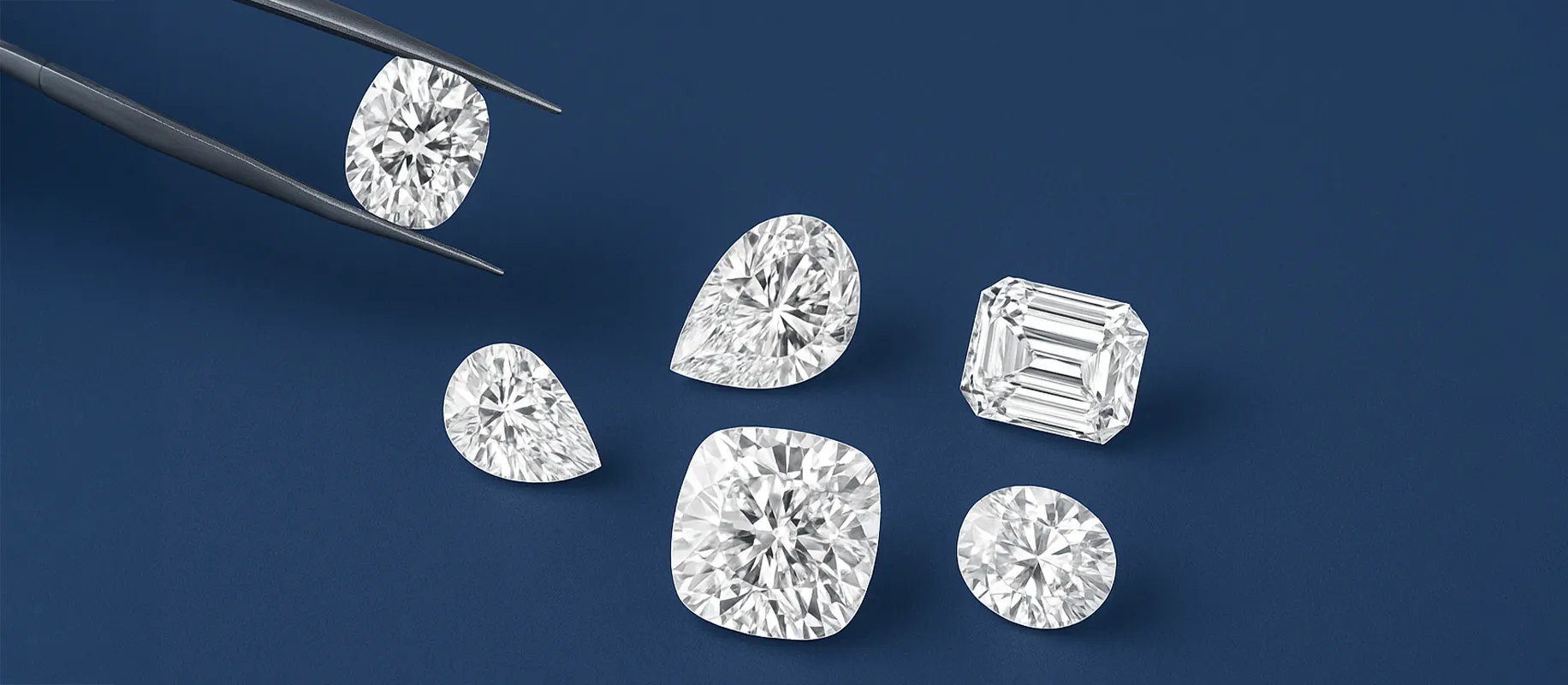Natural diamonds, lab-grown diamonds, moissanite, and cubic zirconia may look similar to the naked eye, but each one has unique characteristics when it comes to origin, brilliance, durability, and value.
Origin
Natural diamonds are formed deep within the Earth over millions of years, under intense heat and pressure. Lab-grown diamonds, on the other hand, are created in controlled environments using advanced technologies (CVD or HPHT), mimicking the same natural conditions. Moissanite occurs in nature but is extremely rare, so nearly all moissanite sold today is lab-created. Cubic zirconia is a fully synthetic material, widely used in fashion and everyday jewelry.
Hardness
A stone’s hardness determines how well it resists scratches and wear over time. Both natural and lab-grown diamonds score a perfect 10 on the Mohs scale, making them ideal for everyday wear. Moissanite follows closely with a score of 9.25, while cubic zirconia ranges between 8 and 8.5.
This makes diamonds the most durable option, while moissanite also performs very well under daily use. Cubic zirconia is better suited for occasional or lower-impact wear.
Brilliance
Brilliance is one of the most visually striking aspects of a gemstone. Diamonds, whether natural or lab-grown, offer a balanced combination of white brilliance and refined fire.
Moissanite is known for its dazzling rainbow flashes and bold sparkle, which appeal to those who want to stand out.
Cubic zirconia provides a bright, clean shine with a crisp, almost glass-like appearance that many find modern and eye-catching.
Color
Color plays a major role in a gemstone’s visual impact. Natural diamonds are graded from D (colorless) to Z (noticeable yellow tint), with colourless grades being the most valuable. Lab-grown diamonds are often available in high color grades (D–F) due to precise control in production.

Moissanite can sometimes have a warm tone, especially in larger sizes or under certain lighting, giving it a subtly golden glow.
Cubic zirconia is generally colorless and clear, although its color and clarity may vary slightly depending on quality and cut.
Value
Natural diamonds are the most valuable option and maintain their long-term market appeal. Lab-grown diamonds offer the same physical and visual properties at a more accessible price point—typically 30% to 60% less than their natural counterparts.
Moissanite presents an attractive middle ground for those who want maximum sparkle without the diamond price. Cubic zirconia is the most affordable of all, making it ideal for casual jewelry or bold designs without a high investment.
Certification
Natural diamonds are usually accompanied by certifications from trusted institutions like GIA, IGI, or HRD, which assess the 4Cs: Cut, Clarity, Color, and Carat.
Lab-grown diamonds can be certified by the same institutions, clearly labelled as lab-created.
Moissanite is not graded the same way as diamonds, though many reputable producers provide authenticity guarantees. Cubic zirconia typically does not come with certification, as it is not classified as a precious gemstone.
Which Should You Choose?
Choosing between a natural diamond, lab-grown diamond, moissanite, or cubic zirconia depends on your priorities, lifestyle, and the occasion.
Go for a natural or lab-grown diamond if you’re marking a timeless occasion—like an engagement—and value tradition, durability, and symbolism. Moissanite is perfect for those who love bold sparkle and want a distinctive look with high durability. Cubic zirconia is a smart option for travel, statement pieces, or experimenting with different styles on a budget.
There is no right or wrong choice—each stone offers something unique. The best decision is the one that reflects your personal style and values. Whatever you decide, our workshop is here to craft it into a one-of-a-kind piece made with care, precision, and dedication to your vision.
